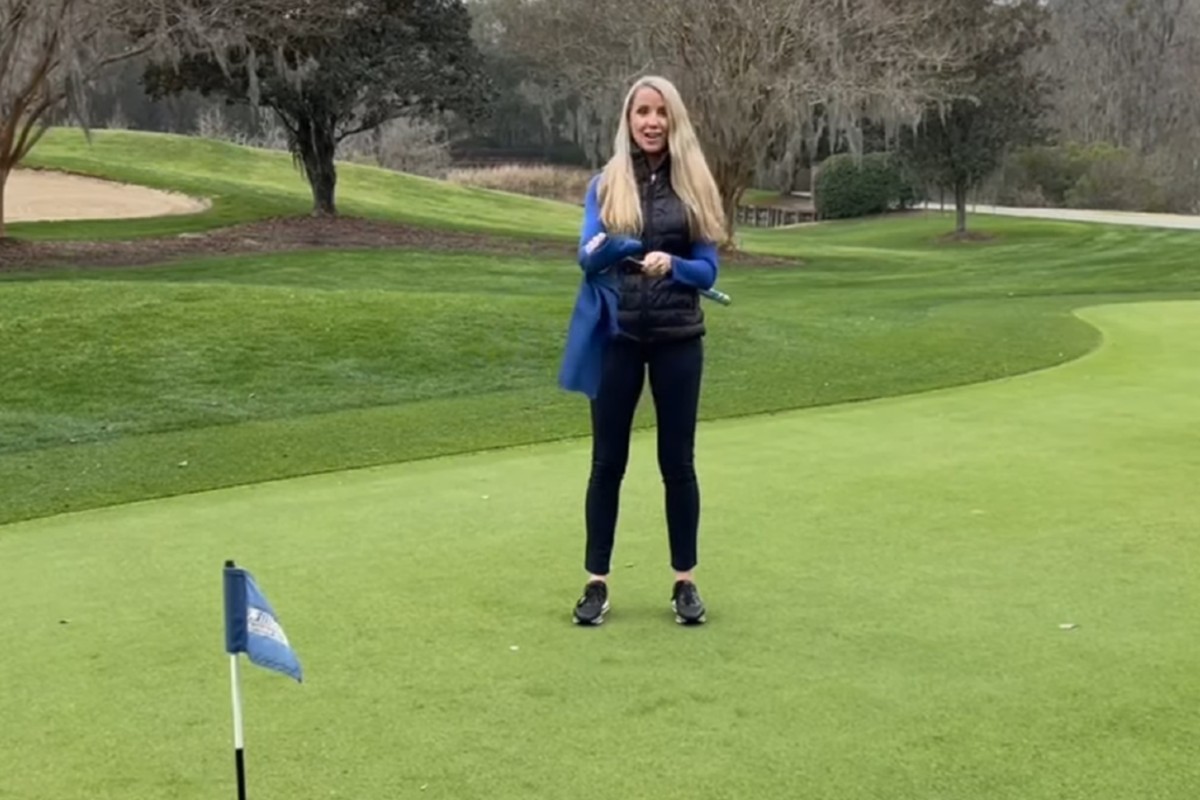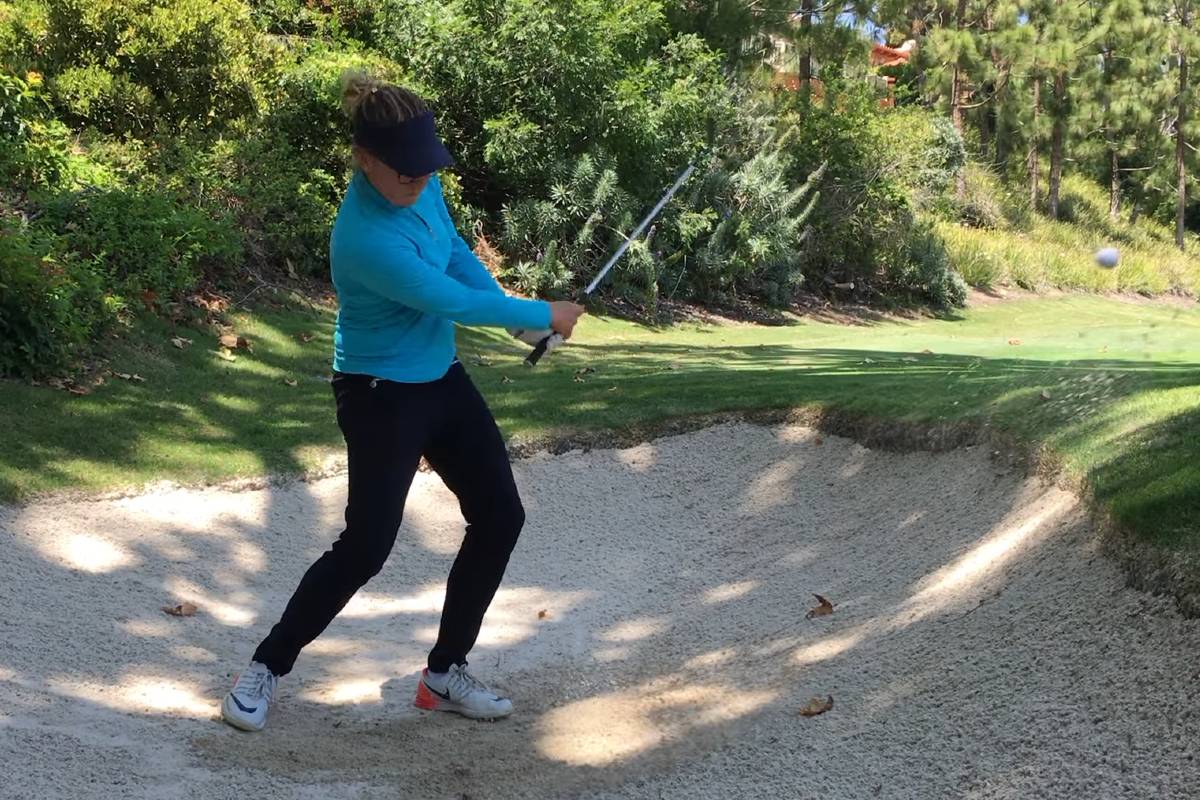Five holes into a spectacular game, my partner Kathy started complaining about a headache. She was prone to headaches, so I didn’t worry about it too much. Our golf cart had GPS. A storm was brewing to the south and Kathy believed her headache was because of the change in the barometric pressure. Although she was nauseated, she took some Tylenol and was more than willing to continue the game.
We could be notified if severe weather was imminent via the GPS monitor on our cart but her headache as concerning. Kathy had never really complained of any health issues before today. She teed off on the next hole and made an amazing drive. We chatted about various things going on in our lives; husbands, work, the amazing course, but something was a little off today with Kathy.
She wasn’t quite herself.
A few more drives into the round and I could tell something was wrong. Kathy’s headache was worsening instead of improving with the Tylenol. She looked flush, her skin was red, and she started to get agitated and irritable with me. I couldn’t understand it as I had not done anything or said anything that was adversary. It was hot outside (head index of over one-hundred degrees) and we were a long way from the club house.

There were water stations scattered throughout the course and we stopped occasionally for water breaks, but we were also drinking Vodka and soda between holes. It had been a long week for both of us and this, our weekly round of golf together, was our way of unwinding from a stressful and chaotic week. It was our routine. We were good friends and golfing was a way for us to decompress together. Today was different, though. Kathy was becoming more irritable and agitation with every passing minute and at one point, she wasn’t making a lot of sense.
What is Heat Stroke
Heat stroke occurs when the body reaches a temperature of 104 degrees Fahrenheit due to long periods in the heat or exerting yourself through physical activity. Normal body temperature is 98.6 degrees Fahrenheit. Symptoms of heat stroke include altered sweating, rapid breathing, increased heart rate, flushing of the skin, headache, nausea and vomiting and changes in behavior and or mood. The person may become confused, irritable, and angry. Athletes, infants, and the elderly are at increased risk of heat stroke with the elderly making up most heat stroke deaths. It is considered a medial emergency (Virani, et al., 2021). If signs of heat stroke occur, seek emergency medical care.
Heat Stroke Treatment
Treatment for heatstroke focuses on cooling the body to a normal temperature to prevent and reduce damage to the brain and vital organs. The first course of action was to rehydrate and cool the body as quickly as possible through hydration and evaporation techniques. Recognizing that Kathy was experiencing a heat stroke, I sat her down in the golf cart and pushed the emergency button on the GPS to notify emergency services. I then had her drink several glasses of water and put a cooling towel around her neck. Major blood vessels in the neck include the internal jugular veins and the carotid arteries. Placing ice and a cooling towel around the neck helped cool the blood as it surfaced towards the skin and continued towards the brain and heart.
Cooling towels soaked in cold water can help drop body temperature by thirty degrees and can help keep the body cool for up to two hours at a time. It is a good preventive measure, but also a good treatment option when heat stroke is suspected.

Preventing Heatstroke
To prevent heat stroke it is important to stay hydrated and avoid alcohol consumption which interferes with the body’s ability to control temperature. Using cooling towels, taking frequent water breaks, avoiding alcohol consumption, and utilizing cooling towels while playing on the back nine will help ensure a successful gold experience.
What Happened in our Game
Our game ended on the seventh hole that day. The course manager met us on the course with emergency medical services and Kathy was taken to the local hospital for evaluation and treatment. She was given IV fluids to rehydrate and cooling blankets to bring her body temperature back to normal. She was kept overnight at the hospital for observation purposes. Risk factors for Kathy included her age (she is in her sixties and as we age, the central nervous system begins to deteriorate which makes it more difficult for the body to cope with extremes in temperature), we were playing in hot weather, we were drinking alcohol and not staying hydrated with water and she had some health conditions that increased her risk for heat stroke (e.g., she was on beta blockers and diuretics).
Certain health conditions increase the risk for heat stroke including being obese, being sedentary and having a previous history of heat stroke. Although Kathy did not meet these last criteria, she was at increased risk due to her medications and drinking on the course.
Taking care of each other on the course is part of the game of golf. Being aware of the signs and symptoms of heat stroke and how to manage it will help you take care of yourself, and your colleague during the summer months.
Reference:
Heart Disease and Stroke Statistics-2021 Update: A Report From the American Heart Association. Circulation, 143(8), e254–e743.
Virani, S. S., Alonso, A., Aparicio, H. J., Benjamin, E. J., Bittencourt, M. S., Callaway, C. W., Carson, A. P., Chamberlain, A. M., Cheng, S., Delling, F. N., Elkind, M., Evenson, K. R., Ferguson, J. F., Gupta, D. K., Khan, S. S., Kissela, B. M., Knutson, K. L., Lee, C. D., Lewis, T. T., Liu, J., … American Heart Association Council on Epidemiology and Prevention Statistics Committee and Stroke Statistics Subcommittee (2021). https://doi.org/10.1161/CIR.0000000000000950
Feature Photo: LPGA Tour player Lydia Ko keeps cool under an umbrella at the 2022 US WOMENS OPEN. This photo and all other photos in the article by Ben Harpring







